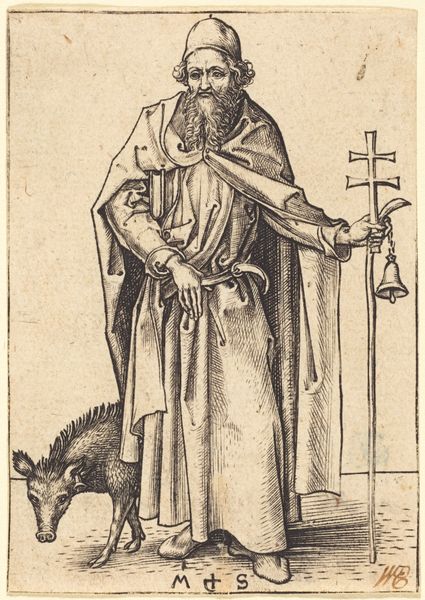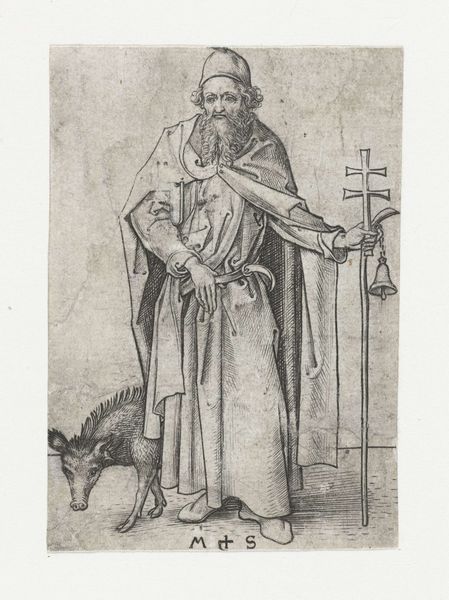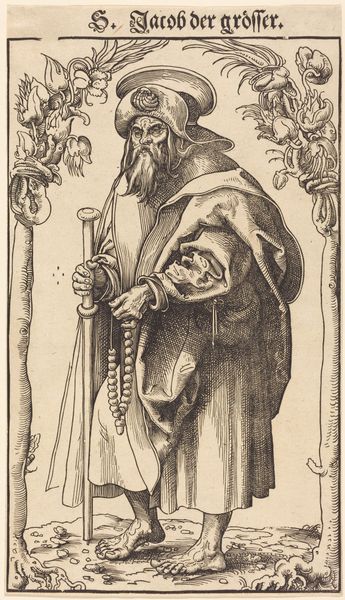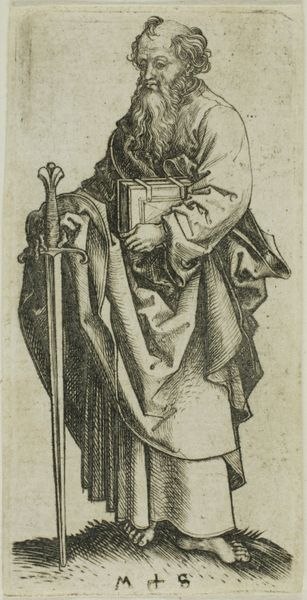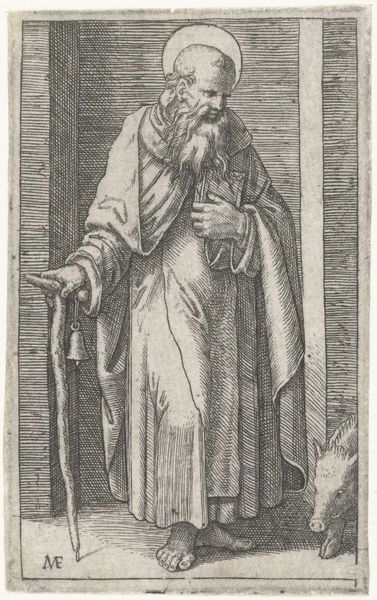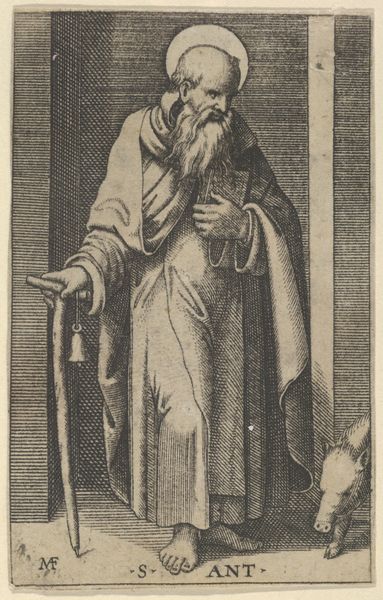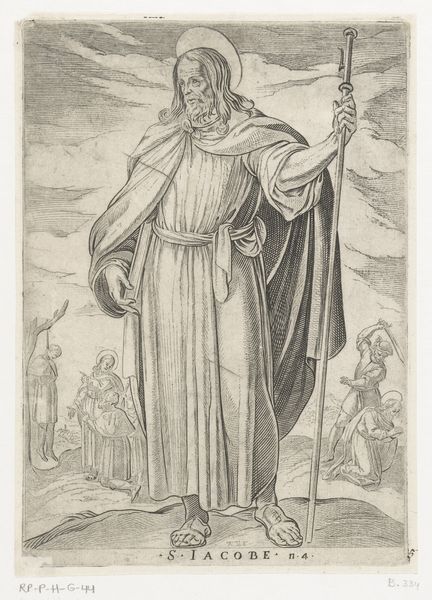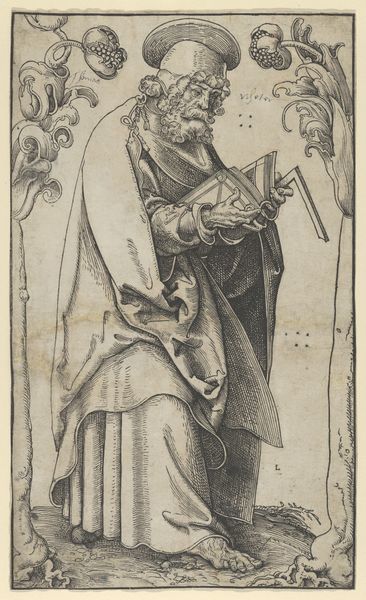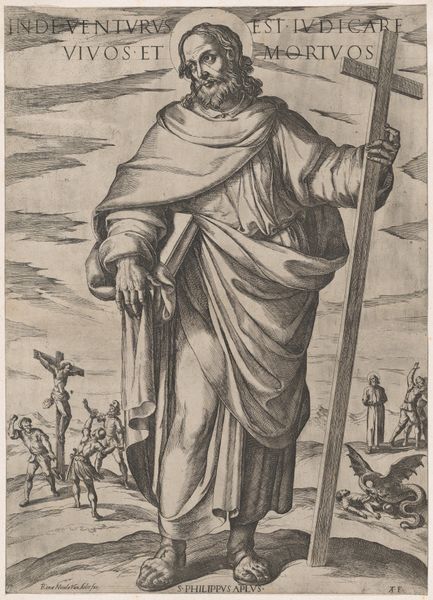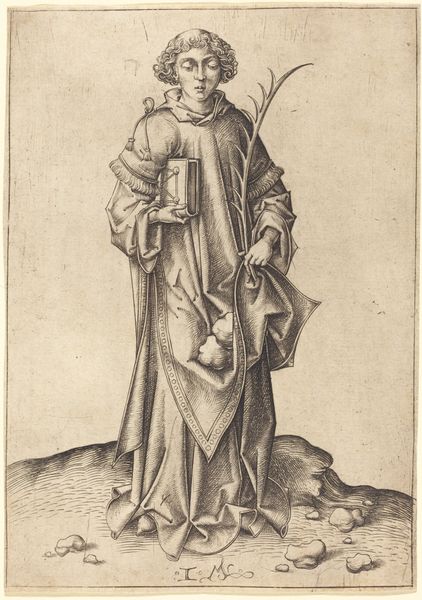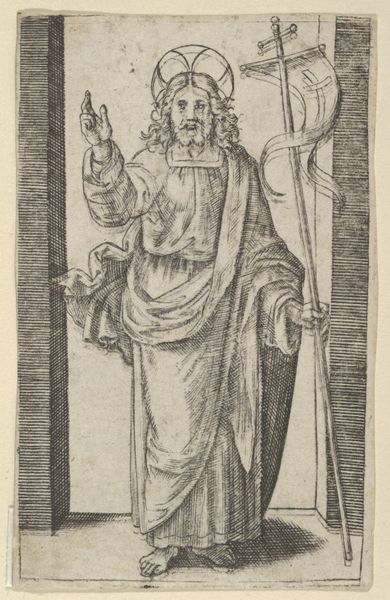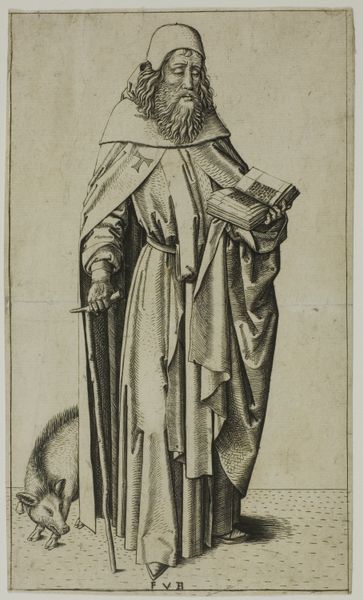
drawing, print, engraving
#
portrait
#
drawing
# print
#
mannerism
#
figuration
#
engraving
Dimensions: sheet: 3 1/2 x 2 3/8 in. (8.9 x 6 cm)
Copyright: Public Domain
Editor: We are looking at Hieronymus Wierix's engraving "Saint Anthony," created in 1564. It depicts a full-length portrait of the saint with a pig by his side, rendered in incredible detail. What strikes me is the artist's attention to texture, the lines create such tangible robes and bristles. How do you interpret this work within its historical context? Curator: Well, the visual construction of saints serves multiple functions. Consider that the depiction of Saint Anthony was part of the visual and social landscape of the 16th century. Prints like this one disseminated images widely, informing public understanding and reinforcing the Church's authority. How might this accessible medium have changed devotional practices? Editor: It makes it more accessible, like a proto-Instagram for spreading ideas. Is the inclusion of the pig important in the overall symbolism and public perception? Curator: Absolutely. The pig is one of Saint Anthony's identifying attributes. The association comes from the Antonine Order, whose monks were allowed their pigs to roam freely within the community as they sought alms for the poor. His figure projected specific values – charity, healing, protection against disease. Understanding the relationship of this image with the Antonine Order helps us to think about who may have purchased and valued the print. Editor: So, beyond a religious image, it also reflects practical, socio-political forces. Is the intended audience the educated or the masses? Curator: A fascinating question. Printed images had wide appeal, so consider its location; the Metropolitan Museum of Art in New York suggests its status has changed since 1564, hasn’t it? That change also transforms how a viewer makes meaning from this image. What do you make of this idea? Editor: It's fascinating to realize an artwork’s meaning isn't fixed. Our perception evolves based on its journey and where it ultimately ends up being displayed. I’ll certainly look at prints in a new light from now on! Curator: Indeed, thinking about an artwork's social and political function encourages a far deeper reading of art history.
Comments
No comments
Be the first to comment and join the conversation on the ultimate creative platform.
